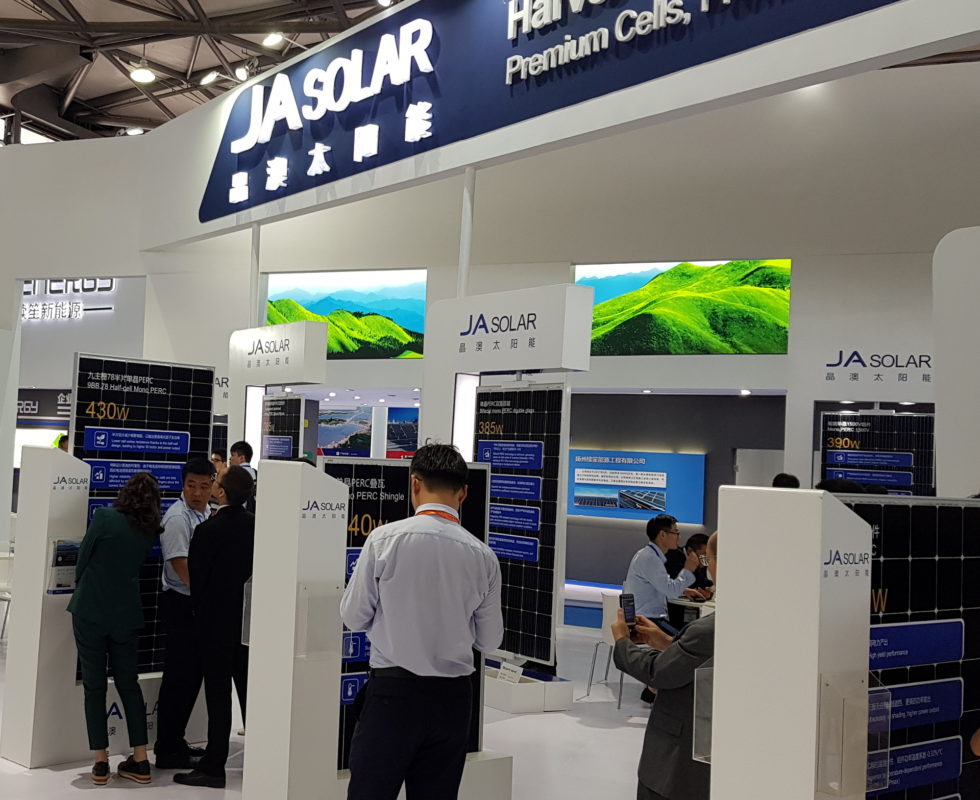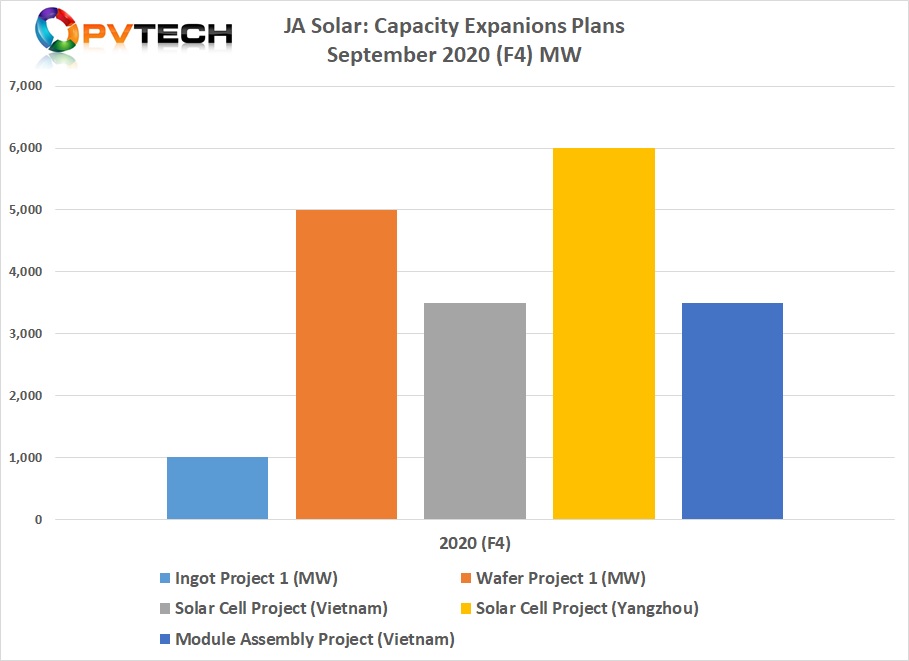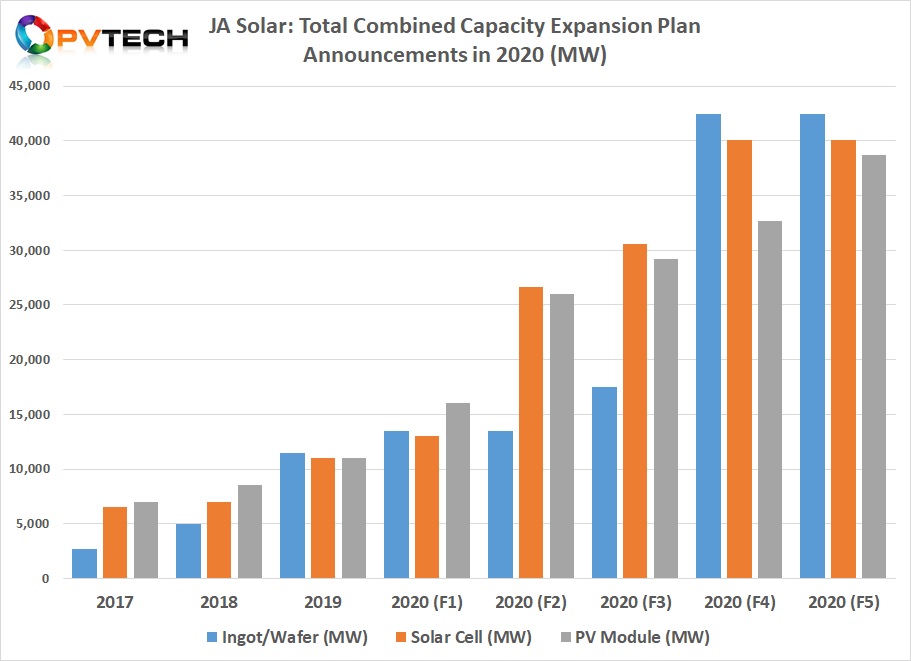
‘Solar Module Super League’ (SMSL) member JA Solar has added a further 6GW of future PV module assembly capacity expansions to its significant roster already announced in 2020.
The SMSL has added a 6GW module assembly plant to plans announced in September to establish a 6GW advanced, high-efficiency solar cell plant and supporting infrastructure at a new manufacturing hub in the Yangzhou Economic and Technological Development Zone (ETDZ), Jiangsu province, which was part of a fourth wave of expansion plans announced through the first nine months of the year.
Try Premium for just $1
- Full premium access for the first month at only $1
- Converts to an annual rate after 30 days unless cancelled
- Cancel anytime during the trial period
Premium Benefits
- Expert industry analysis and interviews
- Digital access to PV Tech Power journal
- Exclusive event discounts
Or get the full Premium subscription right away
Or continue reading this article for free

JA Solar said that the new module assembly plant to be operated by a new subsidiary, JA Solar (Yangzhou) New Energy, would have a capital cost of around RMB 796.3 million (US$121.9 million) and was to be designed for high-efficiency products.
The company has authorised the construction of the plant and said it would take eight months to build and equip.
PV Tech previously highlighted that the original 6GW solar cell plant that would be located in the ETDZ would be operated by JA Solar (Yangzhou) Solar Technology Co, cost around RMB1.72 billion (US$252 million) and would take around 12 months to complete.
Unlike the majority of SMSL members, JA Solar follows an integrated and balanced production capacity strategy, operating ingot/wafer, cell and module assembly in-house at virtually equal capacity levels.
The latest 6GW module assembly plan (F5) addresses the out of balance expansion plans for module assembly compared to ingot/wafer and cells that were apparent after its fourth (F4) and last wave of announcements that came in September 2020.

However, not all the plans announced in 2020 are expected to be operational in 2021 as these plans include multiple phases over several years and not all timelines for each different project have been disclosed.




